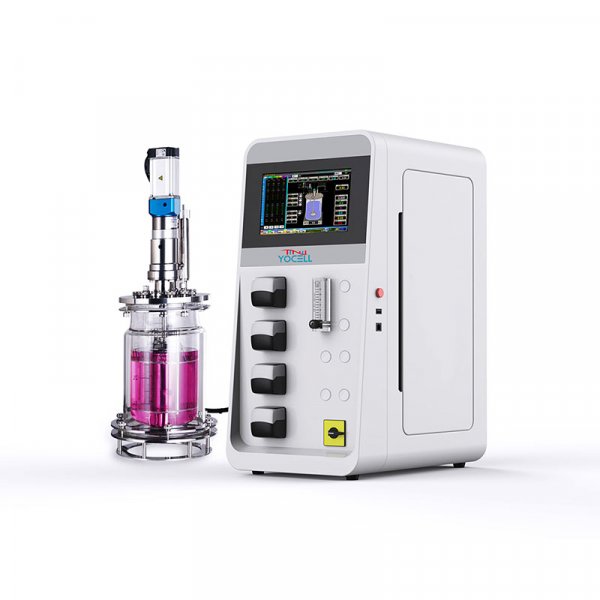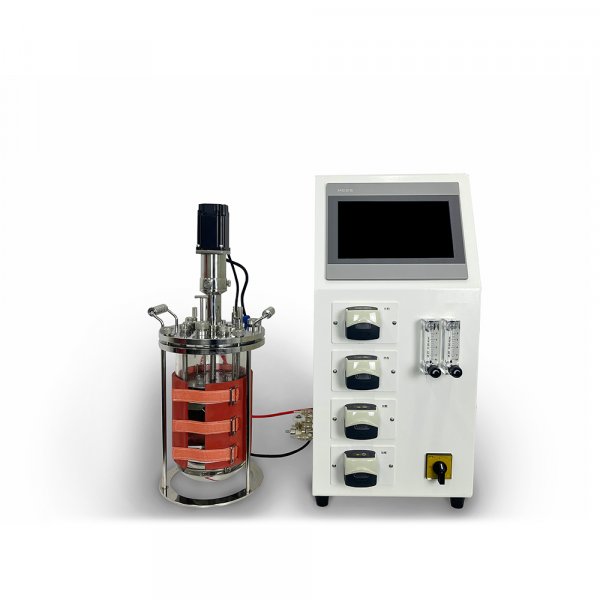High pressure homogenizer is a pharmaceutical industry specialized equipment for dispersion size reduction, mixing and stability, including crude emulsion, microemulsion and suspension. It produces a very high local stress, resulting in a sharp decrease in the particle size. Continuous production under large-scale conditions makes such equipment suitable for scale amplification methods. In a high-pressure homogenizer, the liquid passes through the narrow gap at a high pressure. The liquid injected into the homogenizer can be crude emulsion, microsuspension or dispersion, generally known as premix. Depending on the type of equipment available, the high-pressure homogenizer operates at pressures ranging from 50 to 500 MPa. Among them, the homogenizer capable of operating at a pressure of 200 MPa and above is classified as an ultra-high pressure homogenizer (UHPH). Units of pressure include: MPa, psi, bar. Homogeneous pressure is necessary to force the fluid through narrow gaps, and the sudden passage of the premix through a narrow cavity at high pressure is the cause of the size reduction and droplet rupture.
During the passage of the liquid through the high-pressure homogenizer, the liquid will assemble the molecules in different ways. These molecules interact at the interface with the liquid and the solids, changing the molecular dynamics of the liquid. The molecular dynamics of liquids provide information about the coexistence of many interfacial phenomena that occur simultaneously or in parallel. Studying this interface phenomenon is of great importance for maintaining consistent product quality, especially for the development of novel drug delivery systems. Although nanomedicine delivery systems are known for their uniqueness, such as protecting drug molds and controlling release through packaging, double loading, reduced size, and increased surface area, a large number of batch failures will occur at scale amplification. The reason lies in the lack of attention to each process parameter, and the lack of research on the interdependence of each parameter. Therefore, the method of experimental design (DoE) and quality of design (QbD) is essential to obtain the same parameters consistent for each batch and to study the interdependence between the parameters.
Knowledge of process parameters for a high pressure homogenizer needs to be emphasized because these variables have effects on many physicochemical features, including size, surface charge, and polydispersity index (PDI), affecting stability and cellular uptake. Nanoparticles can be optimized according to their various physiochemical properties, thus enabling an optimized output of nanosuspension, nanoemulsion, or self-nanoemulsified drug delivery systems for drug release.
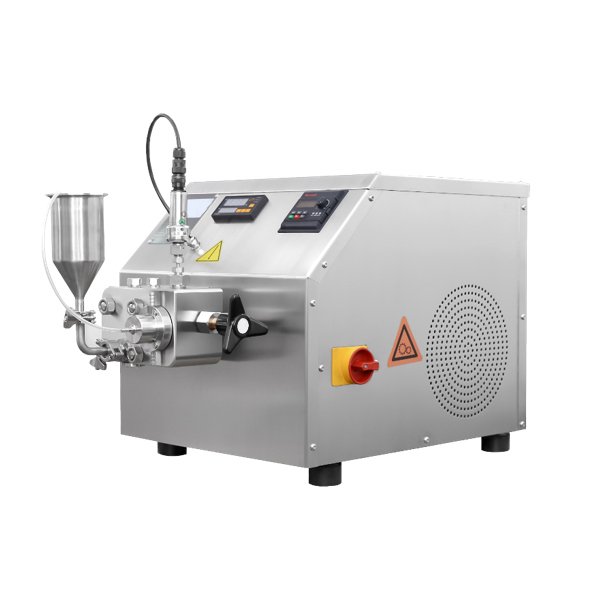
YC-Basic Series——Laboratory type
Parameters Affecting the Process
Homogenous Pressure
Homogeneous pressure is the pressure that forces the fluid through the narrow gap, ranging between 10 and 500 MPa. The droplets undergo shear, cavitation and turbulence, which breaking down into smaller droplets. Droplets rupture only when there is sufficient shear to overcome the Laplace pressure. Increasing the homogeneous pressure creates a stronger eddy current, further reducing the droplet size. Increasing pressure will produce a higher pressure drop, which can easily overcome the Laplace pressure and lead to further size reduction. Therefore, the homogeneous pressure directly affects the particle size through the turbulence, making it a key process parameter. Force density becomes an important parameter to be adjusted when obtaining the expected average particle size.
Circulation Number and Time
Under the specified pressure conditions, the collected premix was recirculated through the narrow gap, and one cycle was completed. The droplet size also decreases further reduced when the liquid again experiences shear, cavitation and turbulence. Thus, the cycles / recirculation times are directly related to the mean diameter size under constant pressure. The time required to complete a cycle depends on the viscosity of the liquid. Due to the reduced droplet size, the viscosity of the emulsion decreases after two to three cycles, thus reducing the time required to complete the cycle.
Fluid Dynamics
In some product lines, the hydrodynamic society inside the pilot and production scale homogenizer is slightly different because of the high clearance height for the production scale. For high-pressure homogenizers with three-or five-piston pumps, the pulse is small and causes only slight oscillations in the flow field. This does not affect efficiency and means that studies of production and pilot-scale high-pressure homogenizers justify a continuous inflow. In the case of laboratory-scale equipment, the pulse is large enough and does change the flow field. The pulse is also expected to lead to a more efficient breakdown when all other parameters remain constant, due to higher flow rates during passage through the gap. Therefore, the variability of each scale should be considered when converting the results of the laboratory and production scale high pressure homogenizer.
Application of the High-Pressure Homogenizer in the Pharmaceutical Field
The Size of the Nanoparticle Was Reduced
The high-pressure homogenizer is mainly used in the pharmaceutical industry for particle size reduction, because it is able to use the pressure to decompose the particles / pellets in the premix into particles with a uniform size range. It is often the preferred technology because it is suitable for aqueous and non-aqueous liquids and can overcome the disadvantages of conventional ball milling methods, such as high amorphization, polyorphization, and metal contamination. Reducing the particle size helps to reduce the required dose, thereby reducing side effects and can improve bioavailability and dissolution properties.
Improve the Solubility and Bioavailability
Previous studies have reported the use of high-pressure homogenizers to improve the dissolution rate and bioavailability of BCS drugs (e.g., spironolactone, budesonide, and omeprazole) by effectively reducing particle size to nanoscale. At the same time, the nifedipine nanoparticles preparation successfully improved the dissolution rate in addition to the saturation solubility. In addition, some studies have prepared celecoxib nanoparticles using the antisolvent precipitation method and high pressure homogenization technology, which showed that the celecoxib samples obtained by high pressure homogenizer technology were better soluble than the antisolvent precipitation method. The enhanced solubility is due to conversion to a more stable crystal form after treatment by a high-pressure homogenizer.
Low water-soluble drugs have low bioavailability and dissolution. In this case, reducing the particle size is an effective way to improve the bioavailability. For the nanoemulsion, loading of the drug within the oil phase of the O / W nanoemulsion showed enhanced absorption. Due to the presence of nanodroplets, the contact area of the nanoemulsion and the gastrointestinal mucosa increases, and its absorption rate is significantly higher than that of the crude emulsion.
Inhibition of Crystal Growth and Decomposition of Large Aggregates
Although the addition of solubilizers is the main method to reduce crystal growth and particle aggregation, Baxter invented a combinatorial technique called "NANOEDGE". In this technique, the precipitated nanoparticles are immediately placed in a high-pressure homogenizer to inhibit the crystal growth and destroy the large aggregates. Studies have shown that high-pressure homogenization can decompose elongated particles (micron scale) into smaller particles (nanoscale) to produce oblate and rod-shaped nanoparticles.
Lower Droplet Remerization
The two regions of active homogenization are described as narrow and recoalescent regions. In the narrow region, the droplets break rapidly with almost no recoalescence, where the droplet interactions begin to dominate and the turbulent intensity decreases. Effective droplet size control is the result of a balance between fragmentation and repolymerization, and repolymerization can be reduced by:
Adaddition of emulsifier / surfactant-emulsifier / surfactant was stabilization by covering the newly broken droplets to avoid coalescence, thus overcoming thermodynamic instability. Different emulsifiers / surfactants can be selected according to the residence time of the emulsion in the dispersed area.
Optimize the energy input during emulsification- -within a certain range, the droplet size cannot be reduced, and even the emulsifier efficiency will be reduced. Overprocessing leads to poor droplet stability.
The increase of the dispersed phase concentration increases the droplet size and makes the droplet breakdown process difficult. The effect of emulsifier covering with new broken droplets failed.
The use of a temperature-thermal homogenization process increases the speed of drug particles, thus enhancing drug distribution and size reduction. It is mainly used in lipid carriers. However, it also has some disadvantages, such as limited use in the case of thermal unstable substances, degradation, and uncertain lipid conversion. Cold homogenization can overcome these disadvantages. Both methods are meaningful and can be used alone or in combination to obtain the expected size reduction.
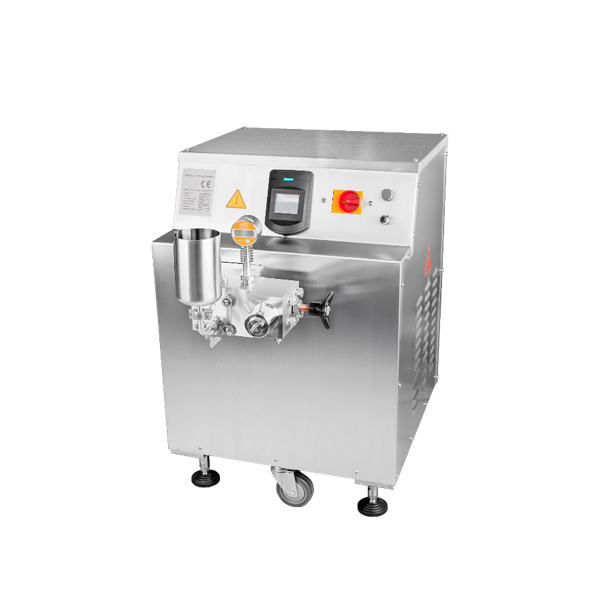
YC-PILOT Series
Improve the Drug-Loading Capacity and the Encapsulation Efficiency
Some studies have prepared nanostructured lipid carriers carrying dehydroxyinosine by combining conventional homogenization with cold and thermal homogenization. Due to the hydrophilicity of the drug, the loading capacity and packing efficiency of dehydroxyinosine nanostructured lipid carriers prepared using a high-pressure homogenizer are very low. However, the loading and encapsulation values of deshydroxinosine increased to 3.39 ± 0.63% and 51.58 ± 1.31%. This indicates a significant increase in its solubility in the lipid phase, which was achieved by reducing its particle size using a thermal high pressure homogenization method.
Reduced Vesicle Aggregation of the Liposomes
Small monolayer liposomal vesicles are known for providing enhanced plasma longevity and achieving greater tissue localization. As an emerging technique, the high-pressure homogenizer is widely used to reduce vesicle aggregation, which reduces the number of multilayered liposomes. For example, a drug delivery system based on albumin-bound paclitaxel uses a high-pressure homogenizer to load albumin and paclitaxel. In addition, in the preparation of the cystic phospholipid gel, the harsh pressure conditions of the high-pressure homogenizer were used to hydrolyze the phospholipids and generate single layers of small vesicles.
The Colloidal Formulation was Prepared by Using the Principle of a High-Pressure Homogenizer
When nanoparticles are prepared with a high-pressure homogenizer, the premix used can be a crude emulsion, dispersion, or suspension. They are prepared either by mechanical shear or by providing physical energy to disperse the liquid phase (dispersed phase) into another phase (dispersed medium). For suspensions and dispersions with large particle size, they can be pre-treated with ultrasound, high shear homogenizer or membrane emulsification system before entering the high pressure homogenizer. Preconditioning of the premix is necessary because large particles may block the gap.
In a high pressure homogenizer, this premix is forced to the exit chamber through a narrow gap at high pressure. The collected homogenization product can be recycled again into the feeder to continue the homogenization process to achieve further size reduction. The resulting final product was then lyophilized. In the development of lipid nanoparticles, the applicability of the high-pressure homogenizer makes it preferred over other methods. The thermal and cold homogenization methods have achieved good results in the development of nanoparticles.
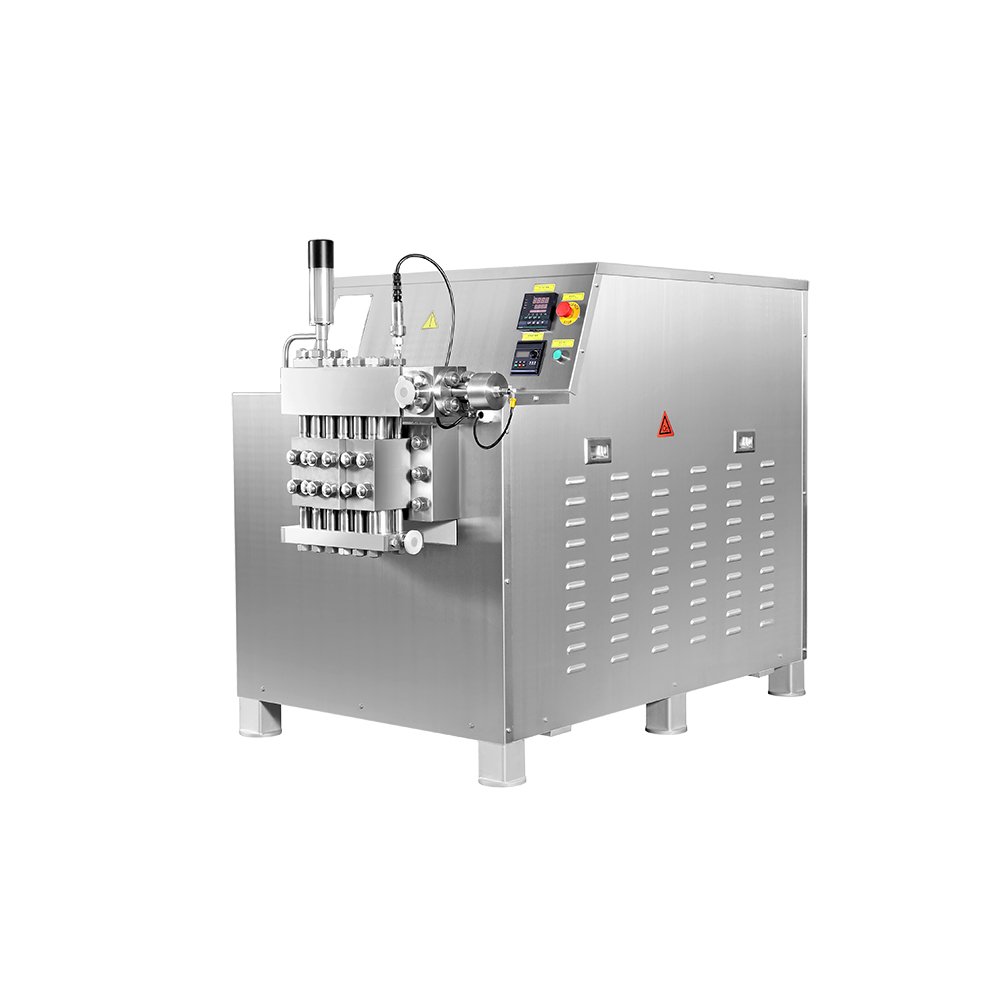
YC-100/150 Series——Production type
Sum up
Through the formulation of nanoparticles using a high-pressure homogenizer, different physicochemical properties can be customized to enhance the stability, efficacy, and delivery of the active drug ingredient (API).
The additional advantage of the high pressure homogenizer is that it utilizes two forces, one due to mechanical action and one due to pressure to process the particles, which makes it possible to obtain a consistent, uniform particle size. Processing steps of molecular liquids, including impact, cavitation, turbulence or shear forces, all affect the formation of particles of uniform size and enhance stability. The results of the high-pressure homogenizer treatment can affect a number of expected treatments, including bioavailability or improved targeting capabilities. These factors are important for drug delivery systems in nanomedicines, as the acquisition of a small size with the required surface area plays a key role in the effective treatment of the disease. The HV homogenizer technology will have a broader impact at both the industrial and research levels, which will benefit from significant improvements in the functionality of the HV homogenizer, allowing for flexibility and functionality in the desired drug applications.

